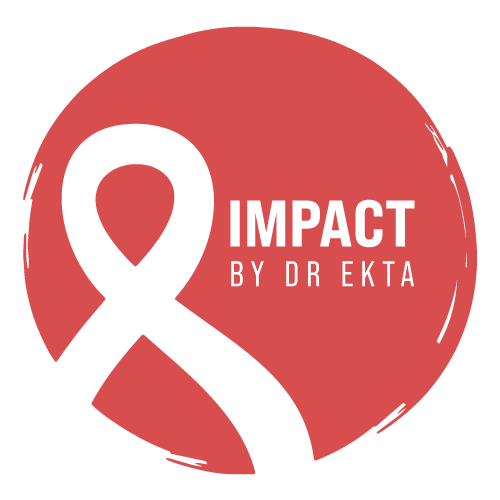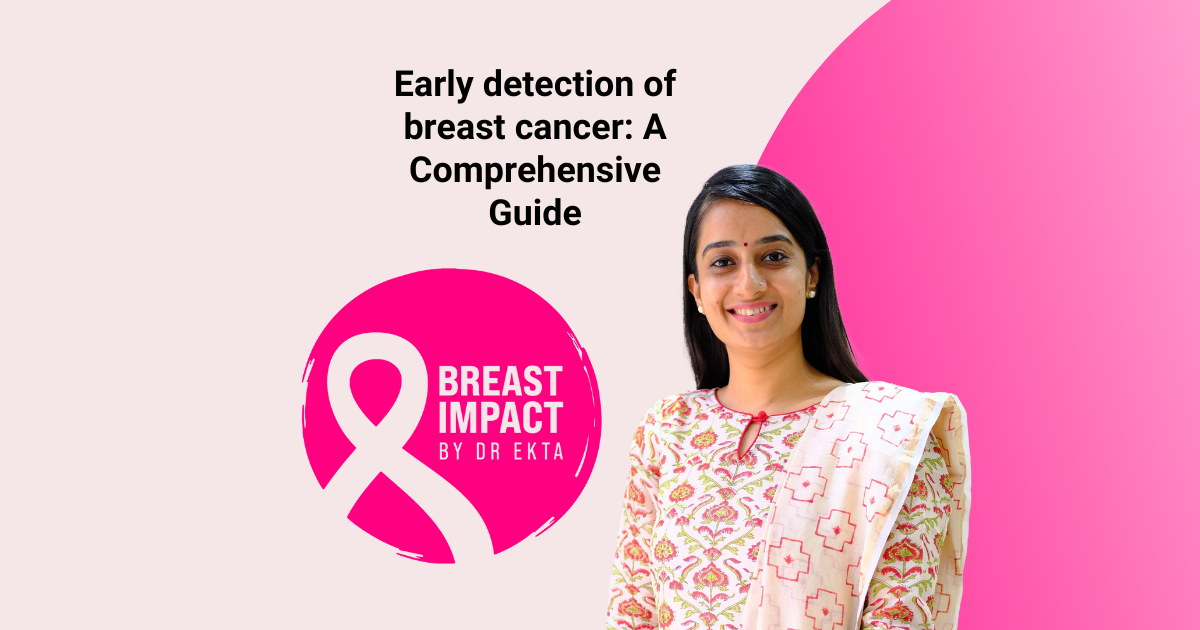As an oncologist, I have seen firsthand how early detection of breast cancer can make a significant difference in treatment outcomes and survival rates. Breast cancer remains one of the most common cancers among women worldwide, but with the right awareness and screening methods, it is possible to catch it in its earliest stages when treatment is most effective.
Many women believe that breast cancer only happens to others or that they are too young to worry about it. However, the truth is that early detection of breast cancer can save lives, and being proactive about screening is the best way to ensure timely diagnosis and treatment. In this blog, I will discuss the importance of early detection of breast cancer, the best screening methods, and what you can do to take charge of your breast health.
Understanding the Importance of Early Detection
Early diagnosis of breast cancer means identifying the disease before it spreads beyond the breast tissue. When detected in the initial stages, treatment options are more effective, less aggressive, and offer a higher chance of complete recovery. Many women diagnosed with early-stage breast cancer can lead healthy, long lives after treatment. This is why regular screenings and self-examinations are crucial.
Signs and Symptoms of Breast Cancer
Recognizing the early signs of breast cancer can lead to timely medical evaluation. Here are some symptoms to be aware of:
- Lump in the breast or underarm: A new, painless lump is often the first sign of breast cancer.
- Changes in breast size or shape: Any noticeable changes that are not related to hormonal cycles should be evaluated.
- Nipple discharge: Unusual discharge, especially if it is bloody, can be a warning sign.
- Skin changes: Redness, dimpling, or thickening of the breast skin may indicate underlying issues.
- Nipple inversion or pain: If your nipple suddenly retracts inward or becomes painful, seek medical advice.
While these symptoms do not always indicate breast cancer, they should never be ignored. If you notice any of these changes, consult a healthcare professional immediately.
Methods for Early Detection of Breast Cancer
There are several ways to ensure early detection of breast cancer, including self-exams, clinical exams, and imaging tests. Let’s explore these methods in detail.
1. Breast Self-Examination (BSE)
A breast self-exam is a simple yet crucial method to detect any unusual changes in your breasts. While it is not a replacement for professional screenings, it helps women become familiar with their normal breast tissue, making it easier to notice changes.
How to perform a BSE:
- Stand in front of a mirror and observe the shape, size, and symmetry of your breasts.
- Raise your arms and check for any dimpling, puckering, or changes in skin texture.
- Use your fingers to feel for lumps or thickened areas, moving in a circular motion around the entire breast and under the armpit.
- Perform the exam monthly, preferably a few days after your menstrual cycle when breasts are less tender.
If you notice any lumps, changes in skin color, nipple discharge, or persistent pain, consult a healthcare provider immediately. Remember, not all lumps indicate breast cancer, but they should always be evaluated.
2. Clinical Breast Examination (CBE)
A clinical breast examination is performed by a healthcare professional who manually examines the breasts for abnormalities. This exam is usually part of a routine check-up and can help identify suspicious lumps that may require further investigation.
Women in their 20s and 30s should have a CBE at least once every three years, while women 40 and older should have it annually. If you have a higher risk of breast cancer, your doctor may recommend more frequent examinations.
3. Mammography: The Gold Standard for Early Detection of Breast Cancer
Mammograms are the most effective screening tool for early detection of breast cancer. A mammogram is an X-ray of the breast that can detect tumors that are too small to be felt. Regular mammograms can reduce breast cancer mortality by up to 40%.
- Women aged 40-49: Should discuss their risk factors with a doctor and decide on the right time to start mammograms.
- Women aged 50-74: Should undergo mammograms every one to two years.
- Women with a family history of breast cancer: May need to start screening earlier and have more frequent tests.
Digital mammography and 3D mammograms provide even clearer images, helping doctors detect breast cancer at its earliest stages.
4. Ultrasound and MRI for High-Risk Women
For women with dense breast tissue or a higher risk of breast cancer, additional imaging tests like breast ultrasound or MRI may be recommended.
- Ultrasound: Used to examine lumps detected in a mammogram or physical exam.
- MRI (Magnetic Resonance Imaging): Recommended for women with genetic mutations (such as BRCA1 or BRCA2) or a strong family history of breast cancer.
These tests provide a more detailed view of breast tissue and can help detect breast cancer in its earliest stages.
Understanding the Risk Factors for Breast Cancer
While screening and regular check-ups are vital, understanding the risk factors of breast cancer can also help in early detection of breast cancer.
Some risk factors include:
- Age: The risk of breast cancer increases as you get older.
- Family History: Having a first-degree relative (mother, sister, daughter) with breast cancer increases your risk.
- Genetic Mutations: BRCA1 and BRCA2 gene mutations significantly raise the risk.
- Lifestyle Factors: Smoking, excessive alcohol consumption, obesity, and a sedentary lifestyle can increase your risk.
- Hormone Therapy: Prolonged use of hormone replacement therapy (HRT) may increase the likelihood of breast cancer.
What You Can Do for Early Detection of Breast Cancer
- Schedule Regular Screenings – Follow the recommended guidelines for mammograms and clinical exams.
- Perform Monthly Self-Exams – Stay familiar with your breast tissue and report any changes to your doctor.
- Know Your Risk – If you have a family history of breast cancer, talk to your doctor about genetic testing and additional screening options.
- Adopt a Healthy Lifestyle – Maintain a balanced diet, exercise regularly, and avoid smoking and excessive alcohol consumption.
- Stay Informed – Keep yourself updated with the latest recommendations on early detection of breast cancer.
Final Thoughts
As an oncologist, I cannot emphasize enough how critical early detection of breast cancer is in saving lives. Screening tests, combined with self-awareness and healthy lifestyle choices, can drastically improve the chances of catching breast cancer early and treating it successfully. If you haven’t scheduled your next breast cancer screening, I urge you to do so today. Spread awareness, encourage your loved ones to get screened, and take proactive steps toward your breast health.
Remember, knowledge and early action are your best defenses against breast cancer. Stay vigilant, stay informed, and prioritize your health.

